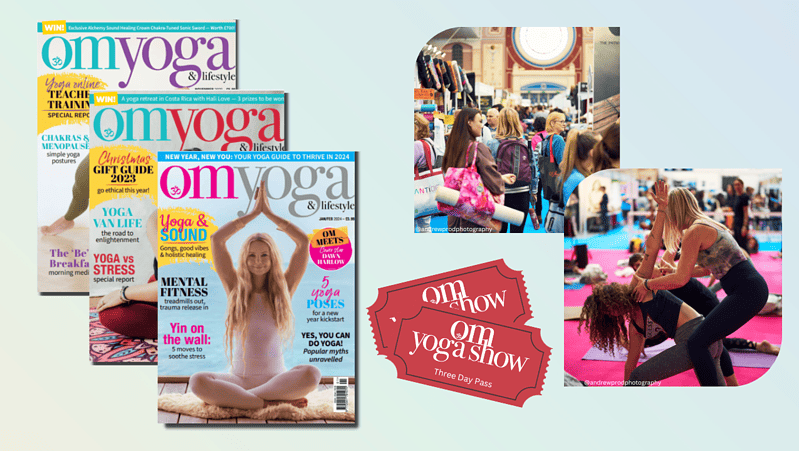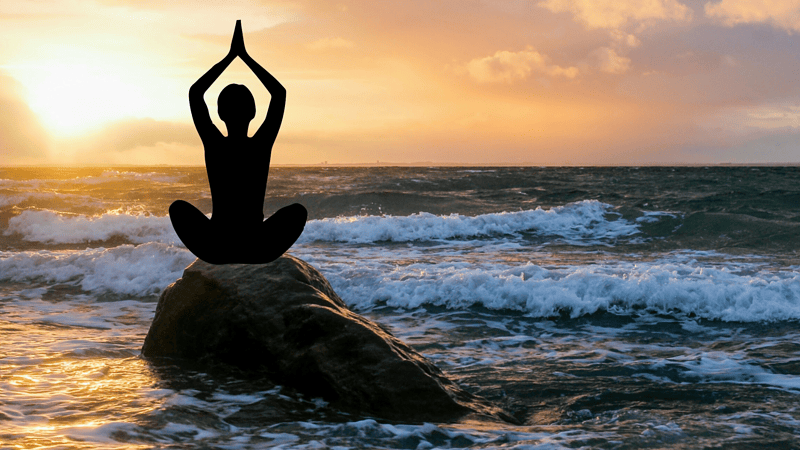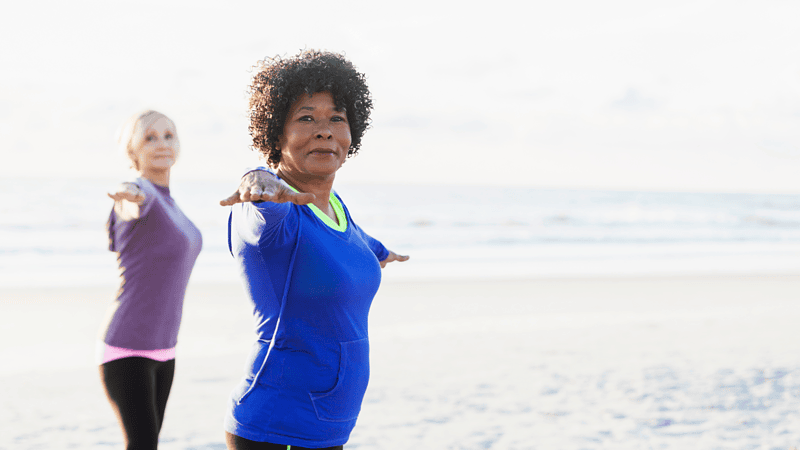Why yoga makes you crazy, by Meg Jackson
Starting a regular yoga practice can be one of the most transformative, empowering, health-enhancing things you can do for your life.
Type ‘benefits of yoga’ into your favourite search engine and you’ll face a tidal wave of responses touting everything from reducing lower back pain, through to balancing your chakras, and unleashing telepathic powers.
Whilst some are definitely at the more questionable end of the scale, it feels like everyday science is proving what those of us who regularly get on a sticky mat already know: basically, that bending and breathing can give your life a massive kick-up-the-asana in a brilliant way.
But as there’s a positive, there has to be a negative. As there is yin there must be a yang. For every wonderful way that embracing a regular practice can enhance your life, it’s also true that yoga makes you crazy. And here’s why…
You get weird obsessions
Ask the average person on the street whether or not they’re bothered about whether or not their pubic bone touches the floor in the splits, or if they can tell you which of their knees is further from the floor in cobbler’s pose, and they’ll look at you like you’re crazy.
But put us on a sticky mat and we suddenly get obsessed with where bits of our body are in relation to all kinds of weird landmarks or locations. Anyway, who is to say your pubic bone wants to get to the floor? Have you asked it? No – don’t do that. You’ll look even crazier.
You compare apples to oranges
One of the basic teachings of yoga is that we are all connected by that brilliant spark of awesomeness that runs through each and every one of us. So yes, on some level we are all the same. However, here’s where we get crazy: we put ourselves in a room full of other humans and start comparing our unique anatomical make-up to theirs. We internally berate ourselves for not having the long hamstrings/open hips/supple shoulders of the person next to us, despite the fact that they’re A Different Person! Yes we’re all fruits, but if you’re an apple you ain’t ever going to be an orange, so stop trying to be one!
Your scale gets scary
There are many benefits to practicing in a class with other people. When a bunch of bodies are moving and breathing together, the energy is undeniably effective. Plus, you get to connect with a teacher and really find nuances in your practice that can be tricky to get when you’re on your own. We need to remember that in this sort of setting it’s inevitable that we compare ourselves to others (apologies to all those enlightened folks reading who have moved on from this level of humanness – well done you!). If Brenda can float into a handstand like an Olympic gymnast, while Bob’s desperate attempts to kick up makes him look like a demented rabbit…as long as they’re both working to their maximum limit, they’re both having the same ‘advanced’ experience. In the end, no one’s savasana feels better just because they were a little bit bendier.
You make yourself hot and bothered
The temperature is a balmy 35 Celsius. It’s so warm you can comfortably expose a fair amount of flesh without fear of frostbite. In fact, just taking a stroll gets you feeling a little bit sweaty. In this sort of temperature most of us would do little more movement than that necessary to get us from our sun lounger to the nearest glass of sangria. But that would be far too much like a fun thing to do. Suddenly it seems like a good idea to grab a towel and embark on 90 minutes of contorting, twisting, stretching and bending; possibly whilst also getting shouted at by a slightly angry teacher (probably because yours is the fourth class they’ve taught that day, and internally they’ve got the moisture content of a raisin).
You start talking deep
As you embark on this path with a regular practice, you may find that the philosophical side of yoga becomes more interesting, and you start asking questions about what you’re discovering about yourself and life in general. But it gets deeper. With familiarity of the folks you’re practicing with it’s only a matter of time before changing room conversations start to get interesting. Give it a few weeks and you’ll be chatting about hormones, husbands, handstands and everything in between. People whose surname you have no idea of will be telling you their top tip for constipation relief, how to re-align your root chakra, and which nut butter will solve that acne problem on your bum cheek. And you won’t mind a bit.
You learn to love Lycra
Once the shiny go-to option purely for grape-vining aerobics enthusiasts, we are now fortunate enough to be overwhelmed with a vast array of Lycra permeations which we can adorn our sweaty bodies with. (I still find it weird that I’m supposed to pay the same for a teeny tiny bra top and pair of leggings, which I’m going to wear just for rolling around on the floor, that I’d feel awkward spending on a whole winter outfit plus shoes.) Suddenly, the more time you spend in these elastic-waisted wonders, you begin to feel how wearing anything with a vaguely robust waistband feels just wrong. Putting jeans on feels like you’re really making an effort, and adding footwear with a heel higher than half a centimetre is the equivalent of dressing up for walking down a red carpet.
You go ga-ga trying to be ‘good’
Yoga gives us a whole new way of looking at life which can be a wonderfully empowering magnifying glass in getting us out of the habits and negative patterns holding us back from living our best lives. The more we learn, the more we want to learn, and the good news is that yoga will never stop teaching us stuff. With learning anything new, there are repeated phases of having to look at what we previously thought to be true or right and re-evaluating it. Or, as my teacher puts it, upgrading our software; the more we learn, the more we realise that we can improve what we’ve been operating with up until that point. A regular yoga practice quickly shows us that our interpretation of being ‘good’ at something is totally flawed. How many times have you heard someone exclaiming that they can’t go to a yoga class because they’re not flexible enough? Now consider using the excuse of ‘I can’t go to a Spanish class because I don’t know how to speak Spanish’.
There’s a reason why it’s called a practice.
Meg Jackson is the founder of Real Life Yoga: a movement to help real people bring a little, or a lot, of yoga into their real lives. Discover more about her weekly lessons, national retreats and international yoga holidays at www.reallifeyoga.net





